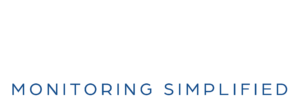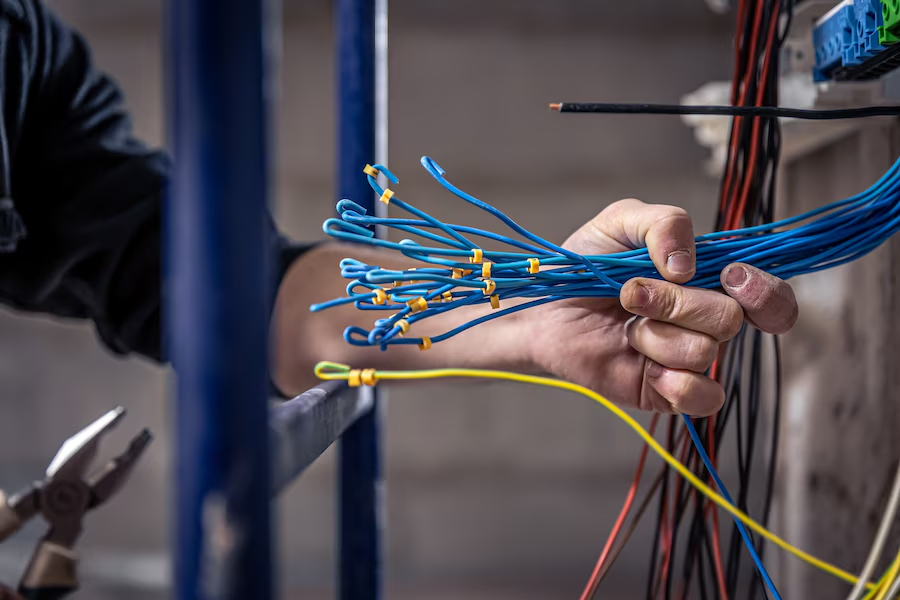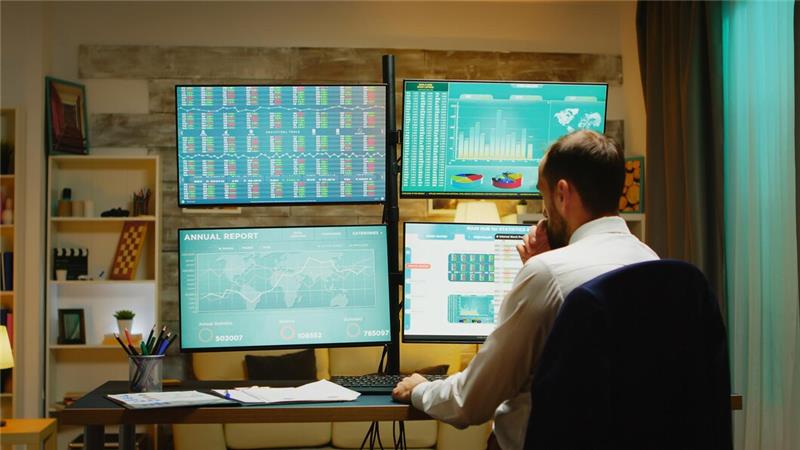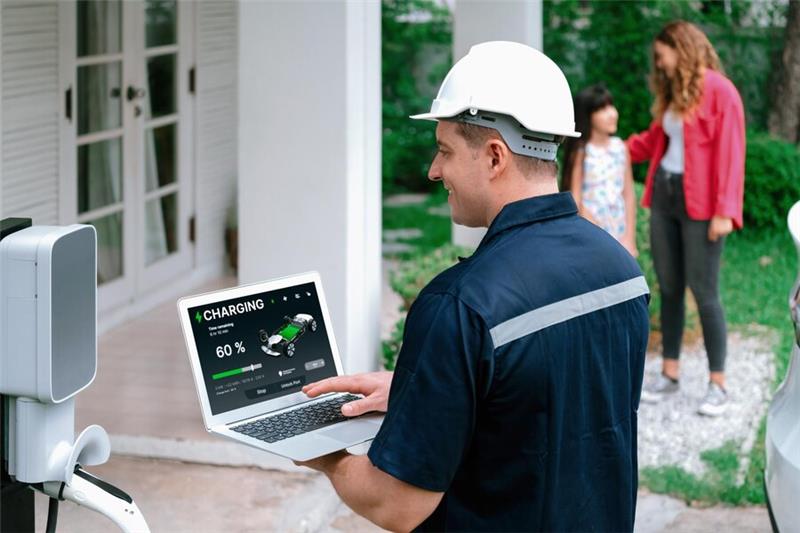Introduction:
In the intricate realm of electrical asset management, ensuring the health and functionality of electrical assets is paramount. As industries transition towards advanced setups, the role of cable termination takes centre stage. Acting as the foundation for seamless electrical transmission, cable termination’s importance is magnified when one considers the risks of failure. But how can industries proactively detect and address potential issues? Enter cable termination monitoring. With the integration of state of the art electrical asset monitoring software, companies can now achieve real time insights into the health of their cable terminations, ensuring uninterrupted operations. This article delves into the science, challenges, advancements, real world benefits, and the future of cable termination monitoring.
The Science Behind Cable Termination:
Cable termination is a technical process ensuring the effective end of an electrical cable. It’s essential for preventing electrical breakdowns, safeguarding insulation, and providing stress control. Proper cable termination ensures minimal energy loss and protects against external factors, making it crucial for maintaining electrical asset health.
The essence of electrical systems lies in their seamless operation, a feat achieved through meticulous engineering and precise components. At the heart of these systems is cable termination, a critical aspect ensuring the effective end of an electrical cable’s path. Its importance cannot be overstated, as it acts as a linchpin, ensuring effective power transmission, safeguarding against potential electrical breakdowns, and providing stress control for the cable.
Cable termination is fundamentally about creating a secure connection point, allowing electrical power or signals to be directed as needed without loss or interference. This involves ensuring that the cable’s insulation is consistent up to its very end, preventing potential arcs or short circuits. The technical intricacies involve understanding the cable’s capacity, its insulation properties, and the environment in which it operates.
However, in today’s advanced electrical setups, merely understanding the mechanics of cable termination isn’t enough. With the increasing complexity of electrical systems and the ever present demand for reliability, the need for continuous monitoring of these terminations has become paramount. Enter cable termination monitoring.
Cable termination monitoring, powered by cutting edge electrical asset monitoring software, elevates the traditional understanding of cable termination. These software systems integrate real time data collection, analytics, and predictive algorithms to provide a comprehensive view of the cable termination’s health. By continuously assessing various parameters like temperature, humidity, and electrical load, these systems can pre-emptively identify potential issues, long before they escalate into significant problems.
For professionals in the electrical domain, this proactive approach is transformative. Electrical engineers can ensure that their designs are operating at peak efficiency, facility managers can schedule maintenance activities based on real data rather than arbitrary timelines, and utility companies can guarantee consistent service to their customers.
The integration of electrical asset monitoring software into cable termination practices represents a fusion of traditional electrical engineering principles with modern technological advancements. By leveraging the insights provided by these systems, companies can ensure that their cable terminations, often considered the weakest link in electrical systems, are monitored, maintained, and managed with unparalleled precision.
In essence, the science behind cable termination has evolved, transitioning from a purely physical and mechanical understanding to a comprehensive, data driven approach. With the adoption of cable termination monitoring, companies are not only ensuring the health of their cable terminations but are also paving the way for future advancements in the realm of electrical asset management.
Modern Challenges in Cable Termination:
With evolving electrical setups, challenges in cable termination arise. External environmental factors, improper installation, and aging infrastructure can compromise termination integrity. Monitoring becomes indispensable for early detection and intervention, safeguarding assets against potential failures.
In the intricate world of electrical systems, the importance of cable termination is paramount. Serving as a foundational component, cable termination ensures a seamless flow of electrical power and signals, providing an optimal interface between the cable and the equipment. However, as with all technical domains, the field of cable termination isn’t without its challenges, especially in today’s rapidly evolving electrical landscape.
The first significant challenge is the environmental factor. Varying temperature ranges, fluctuating humidity levels, and physical disturbances can introduce complexities in the performance and longevity of cable terminations. These environmental stressors can compromise the insulation integrity, leading to potential electrical imbalances or even failures. A consistent monitoring regime, especially with cable termination monitoring systems, becomes imperative to detect and mitigate these challenges early on.
Another noteworthy challenge is the intricacies of modern electrical setups. With the increasing demand for highspeed data and power transfer, the requirements from cable terminations have become more stringent. Ensuring low energy loss, high data transfer rates, and compatibility with various devices introduces complexities that demand precise engineering and regular monitoring.
Furthermore, the aging infrastructure poses its unique set of challenges. Over time, even the best engineered cable terminations can degrade. Wear and tear, coupled with external environmental factors, can result in reduced performance or even failures. This makes the role of proactive monitoring, especially with electrical asset monitoring software, even more crucial.
Improper installation and maintenance practices further exacerbate these challenges. Incorrect installation can introduce vulnerabilities right from the outset, while inadequate maintenance can lead to a gradual decline in performance. It’s here that the role of electrical asset monitoring software becomes pivotal. By integrating real time data analytics and predictive algorithms, these systems can provide invaluable insights into cable termination health. Through timely interventions based on this data, companies can address installation and maintenance challenges, ensuring the health and longevity of their cable terminations.
In the grand scheme of electrical asset management, understanding and addressing these modern challenges is of the utmost importance. By leveraging the capabilities of cable termination monitoring systems, companies can not only navigate these challenges but also optimize their operations. The fusion of traditional engineering principles with modern monitoring software promises a future where cable terminations, despite the challenges, continue to perform optimally, ensuring uninterrupted operations.
Advancements in Cable Termination Monitoring:
Modern electrical asset monitoring software leverages advanced analytics, offering real time insights into cable termination health. By integrating sensors and AI driven algorithms, these systems can predict and alert potential failures, facilitating timely corrective actions.
In the dynamic realm of electrical systems, the need for optimal performance and reliability remains a constant. Cable terminations, being pivotal components in these systems, are no exception. While their importance in ensuring seamless electrical power and signal transmission is well understood, the methods to monitor and ensure their health have seen remarkable advancements in recent years.
Traditionally, the monitoring of cable terminations was largely manual, relying on periodic inspections and maintenance schedules. While effective to a degree, this approach had its limitations. The reliance on human intervention meant that subtle anomalies could go unnoticed, and preventive actions were reactive rather than proactive.
Enter the era of electrical asset monitoring software. One of the most significant advancements in the domain of cable termination monitoring has been the integration of real time data analytics. Modern monitoring systems are now equipped with sensors that continuously collect data from cable terminations, tracking parameters such as temperature, electrical load, and insulation integrity. This data, when processed with advanced algorithms, offers granular insights into the performance and health of the cable terminations.
But the advancements don’t stop there. The fusion of the Internet of Things (IoT) with cable termination monitoring systems has further refined the monitoring process. IoT enabled sensors can transmit data in real time to centralized monitoring platforms, allowing engineers and facility managers to have a live view of the cable termination’s health, irrespective of their location.
Another noteworthy advancement is the integration of predictive analytics in cable termination monitoring. Instead of merely reporting the current status, modern systems can predict potential failures or degradation based on historical data and current trends. This predictive capability ensures that pre-emptive actions can be taken, reducing the risk of unplanned downtimes and ensuring the longevity of the cable terminations.
Machine learning and artificial intelligence further augment these monitoring systems. By continuously learning from the data, these systems refine their algorithms, ensuring that their predictive capabilities become more accurate over time.
For professionals in the electrical industry, these advancements have been transformative. The shift from manual to automated, from reactive to proactive, and from generic to predictive has ensured that cable terminations, often considered the weakest link in electrical systems, are monitored with unparalleled precision.
In essence, the advancements in cable termination monitoring represent the confluence of traditional engineering with modern technological innovations. As the demands on electrical systems continue to grow, these advancements ensure that cable terminations remain robust, reliable, and ready for the challenges of tomorrow.
Real world Applications and Benefits:
Proactive cable termination monitoring has benefited numerous sectors. Utility companies report reduced downtimes, while industrial plants witness enhanced safety standards. By mitigating risks and ensuring seamless operations, companies realize significant operational and financial benefits.
Cable terminations play a pivotal role in the modern electrical landscape, ensuring seamless transmission of power and data across a myriad of applications. The evolution of electrical asset monitoring software, particularly in the domain of cable termination monitoring, has brought forth a plethora of real world applications and tangible benefits.
1. Industrial Plants and Manufacturing Units:
In industries where production lines rely heavily on uninterrupted power, the health of cable terminations is crucial. Advanced cable termination monitoring systems can detect potential issues in real time, reducing the risk of unplanned downtimes. This not only ensures consistent production but also translates to significant cost savings.
2. Utility Companies:
Power distribution entities face the daunting task of ensuring consistent power supply to vast regions. With cable termination monitoring systems, these entities can proactively address potential weak points in their distribution network, ensuring that consumers receive uninterrupted power supply.
3. Research Institutions and Laboratories:
Precision is paramount in research environments. Slight inconsistencies in power supply can compromise sensitive experiments. By leveraging electrical asset monitoring software, research institutions can ensure that their setups are powered optimally, safeguarding their experiments and studies.
4. Data Centres:
In the age of information, data centres are the backbone of the digital world. Ensuring that these centers operate without hiccups is crucial. Cable termination monitoring systems can pre-emptively detect issues, guaranteeing that data centres run efficiently, reducing the risk of data loss or service interruptions.
5. Healthcare Facilities:
Medical equipment, especially lifesaving devices, rely on consistent power supply. Cable termination monitoring ensures that these devices receive uninterrupted power, directly impacting patient care and safety.
The benefits of integrating cable termination monitoring in these real world scenarios are manifold:
Proactive Maintenance: Instead of waiting for a failure, maintenance teams can address potential issues well in advance, ensuring system longevity.
Cost Savings: By reducing unplanned downtimes and optimizing energy consumption, companies can realize tangible financial benefits.
Safety: Early detection of anomalies can prevent catastrophic failures, ensuring the safety of both the equipment and the personnel.
Operational Efficiency: With consistent power supply and reduced downtimes, operations across various sectors can achieve optimal efficiency.
Looking Ahead: The Future of Cable Termination Monitoring:
Emerging technologies promise to further refine cable termination monitoring. Integration of IoT, machine learning, and advanced sensors will enable even more precise monitoring, driving industries towards a future of enhanced reliability and sustainability.
The electrical engineering realm is witnessing a revolution, with technology and innovation steering it towards unprecedented horizons. At the forefront of this transformation is cable termination monitoring, which has already redefined how we perceive and manage electrical systems. But as we stand at this juncture, it’s essential to cast our gaze forward and envision what the future holds for this pivotal domain.
1. Integration of Artificial Intelligence (AI): While today’s cable termination monitoring systems are sophisticated, the future promises even more refinement. The integration of AI algorithms will allow these systems to learn from vast data sets continuously. This means that over time, their predictive capabilities will become even more precise, enabling pre-emptive actions with unparalleled accuracy.
2. IoT Driven Ecosystems: The Internet of Things (IoT) has already made inroads into cable termination monitoring, but its future potential is vast. We can anticipate a world where every component of an electrical system, not just the cable terminations, communicates in real time, creating a cohesive, interlinked ecosystem. This will allow for holistic monitoring, where the health of the entire system can be gauged and managed from a central platform.
3. Remote and Autonomous Monitoring: With advancements in communication technologies, future cable termination monitoring systems will likely be fully remote, with capabilities for autonomous operations. Engineers and facility managers can get insights, alerts, and reports irrespective of their geographical location, ensuring that electrical systems worldwide maintain optimal performance.
4. Sustainability and Green Technologies: As the world becomes more environmentally conscious, future monitoring systems will not only focus on performance but also on sustainability. We can expect innovations that ensure minimal energy wastage, optimizing power consumption, and reducing the carbon footprint of electrical setups.
5. Integration with Augmented Reality (AR) and Virtual Reality (VR): For maintenance teams and engineers, AR and VR can revolutionize how they interact with cable termination monitoring systems. Instead of traditional interfaces, they can get immersive, 3D visualizations of cable health, potential issues, and even simulated solutions, enhancing decision making processes.
The trajectory of cable termination monitoring is clear – it’s headed towards more sophistication, integration, and efficiency. For companies and professionals in the electrical domain, this promises not only enhanced operational efficiencies but also significant cost savings, safety, and sustainability.
Conclusion:
The landscape of electrical asset management stands on the brink of a transformative era. As the significance of cable termination comes to the forefront, the role of proactive monitoring becomes undeniably critical. For professionals across the spectrum, from asset managers to electrical design consultants, the integration of advanced monitoring systems promises a future of informed decisions, reduced risks, and optimized operations. By understanding the science, addressing challenges, harnessing advancements, and looking ahead, industries can navigate the complexities of cable termination. Embracing the synergy between cable termination and advanced monitoring is not just a trend but a necessity, marking the path towards uninterrupted operations and a sustainable future.




